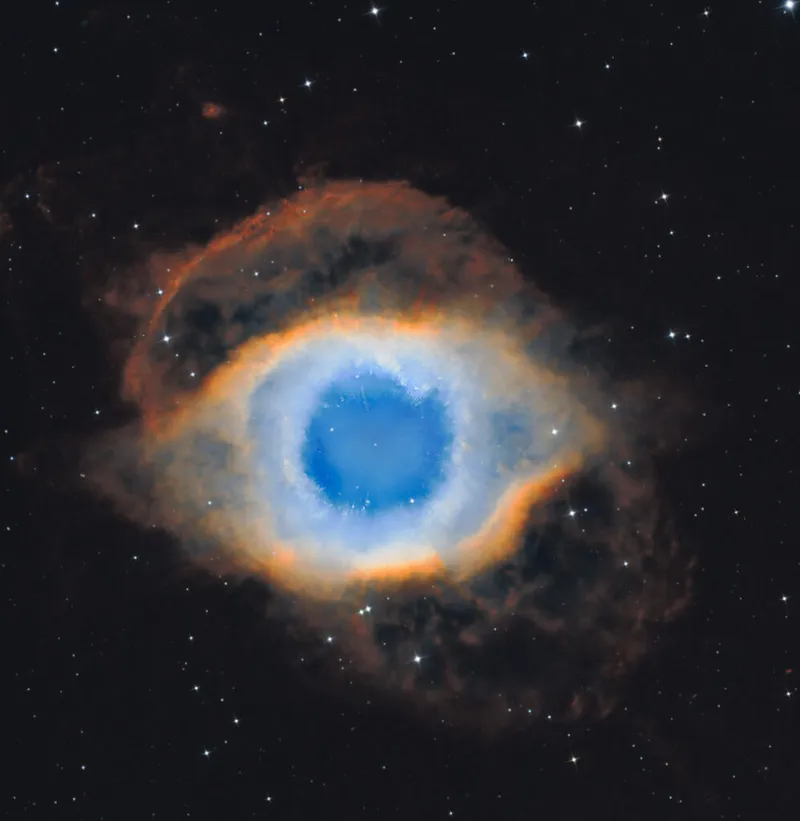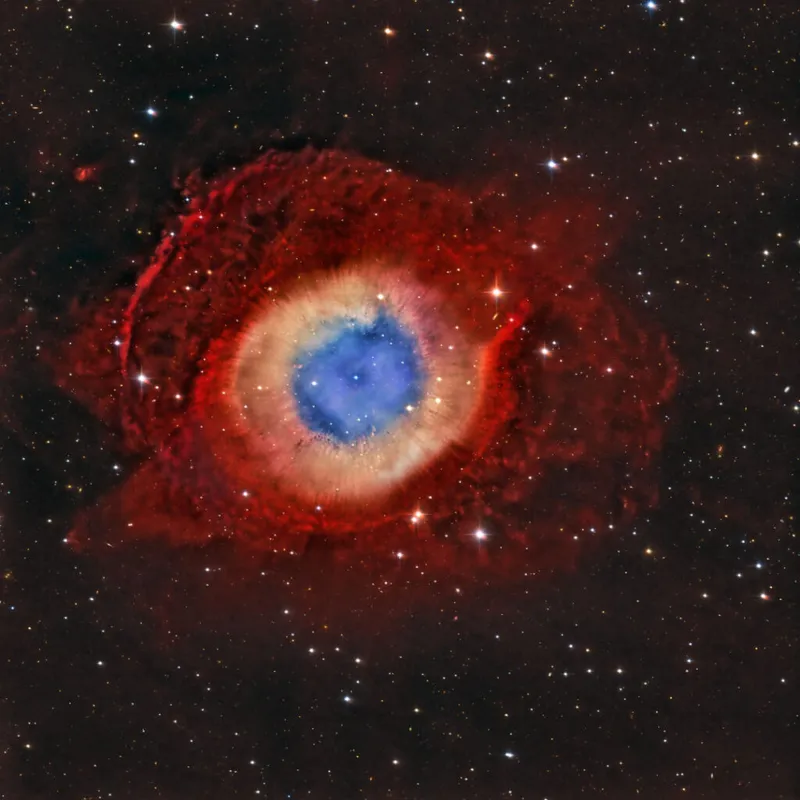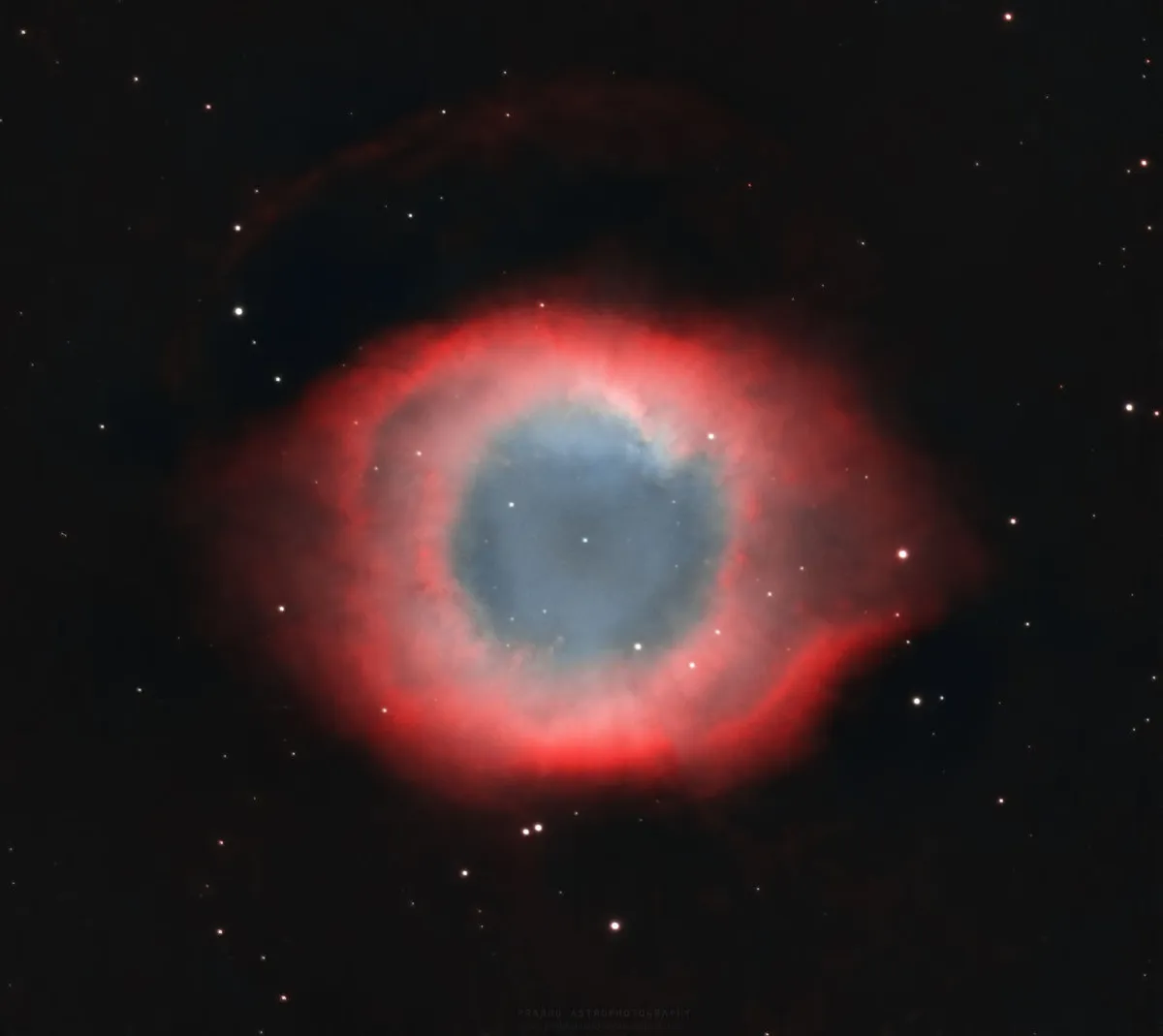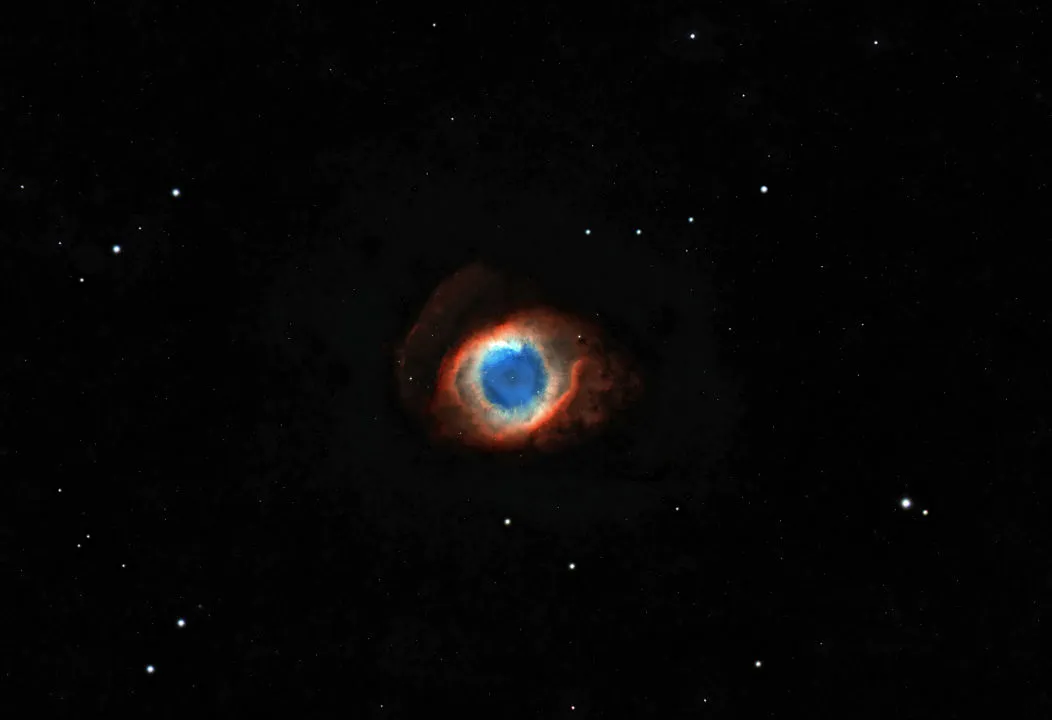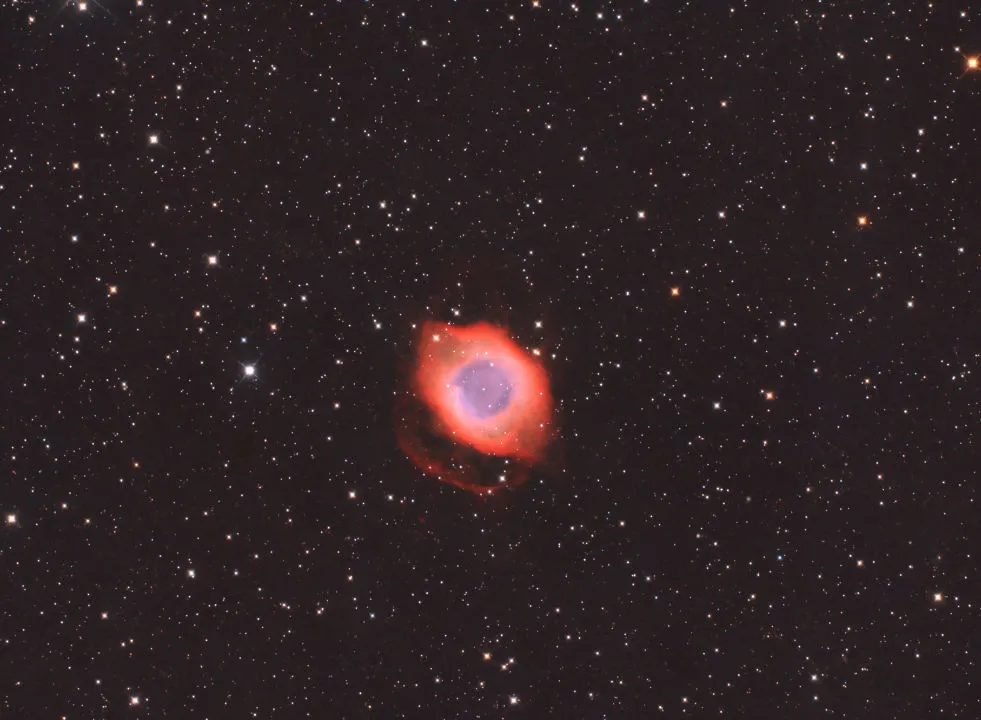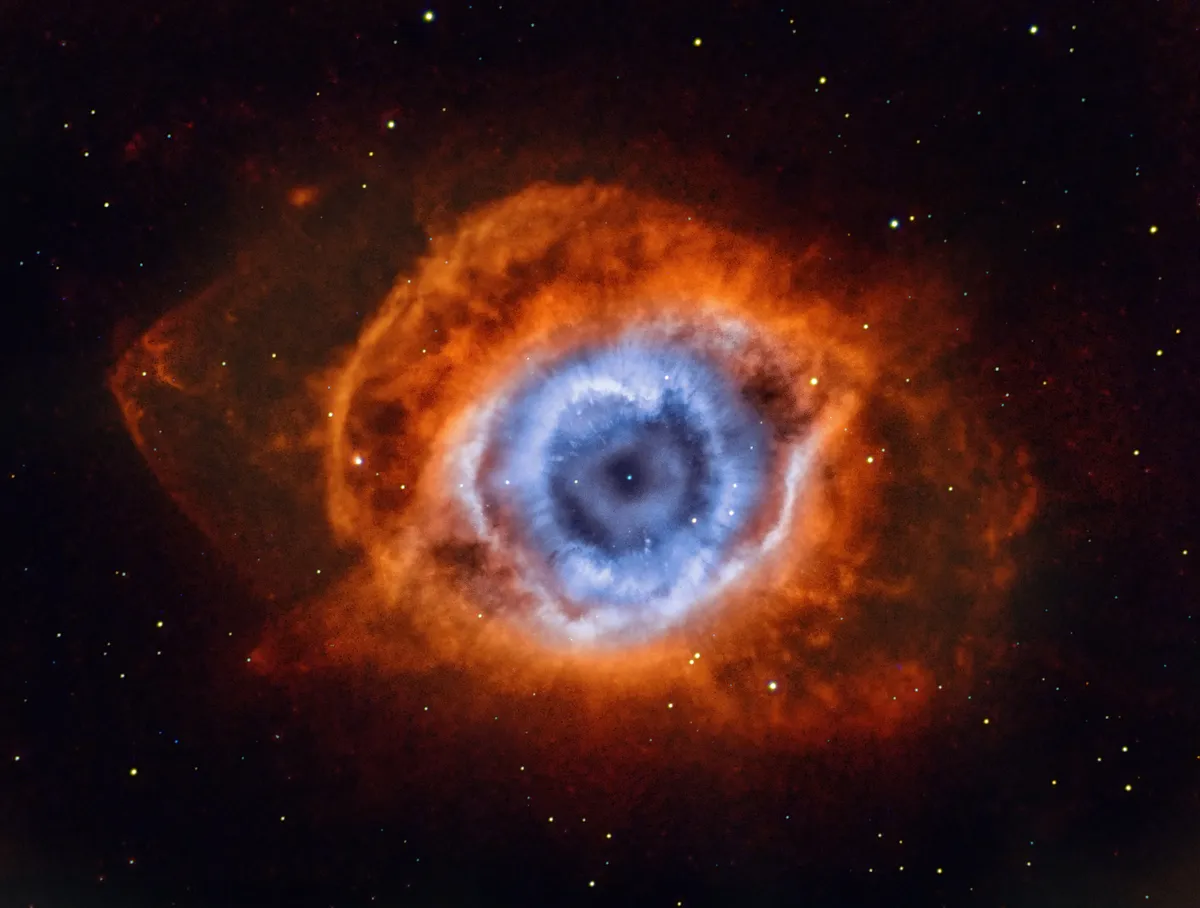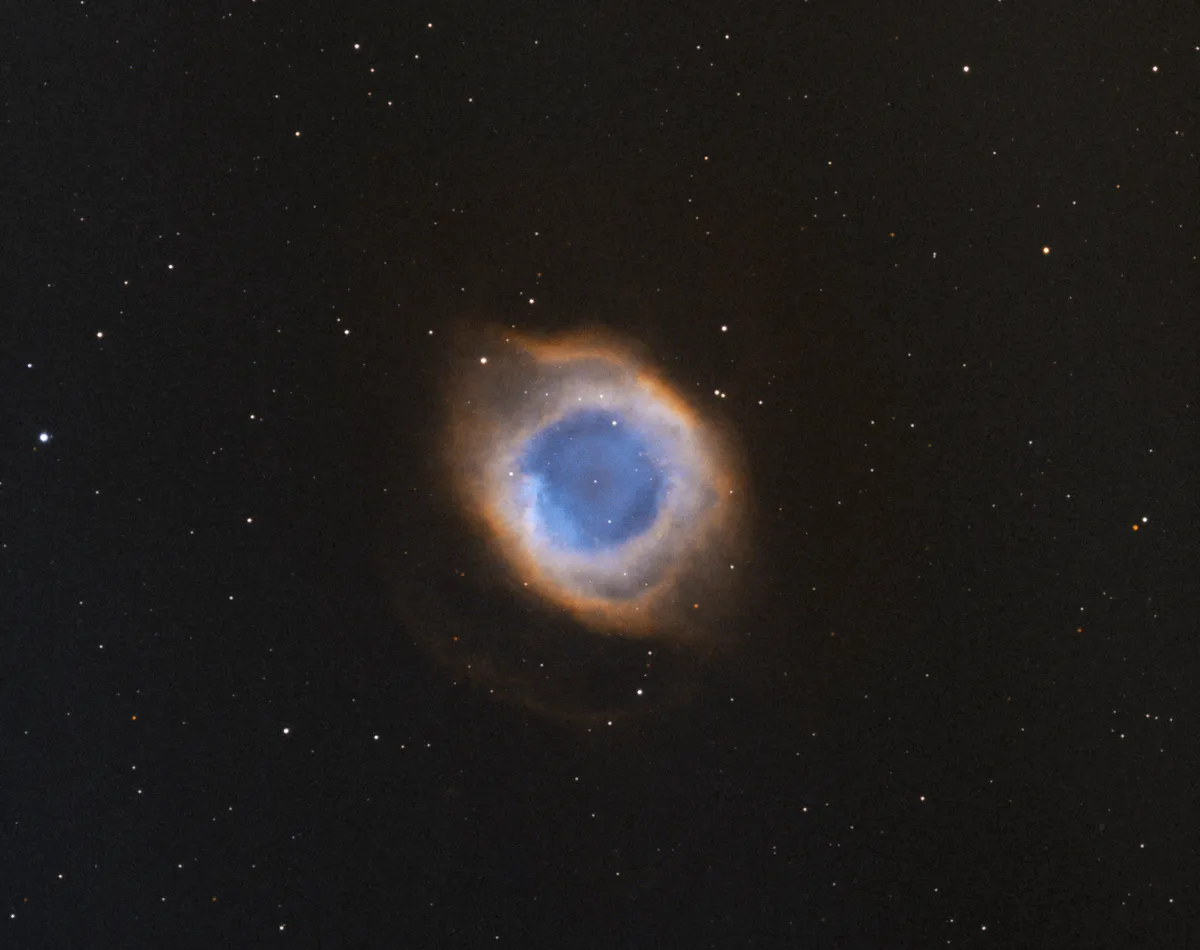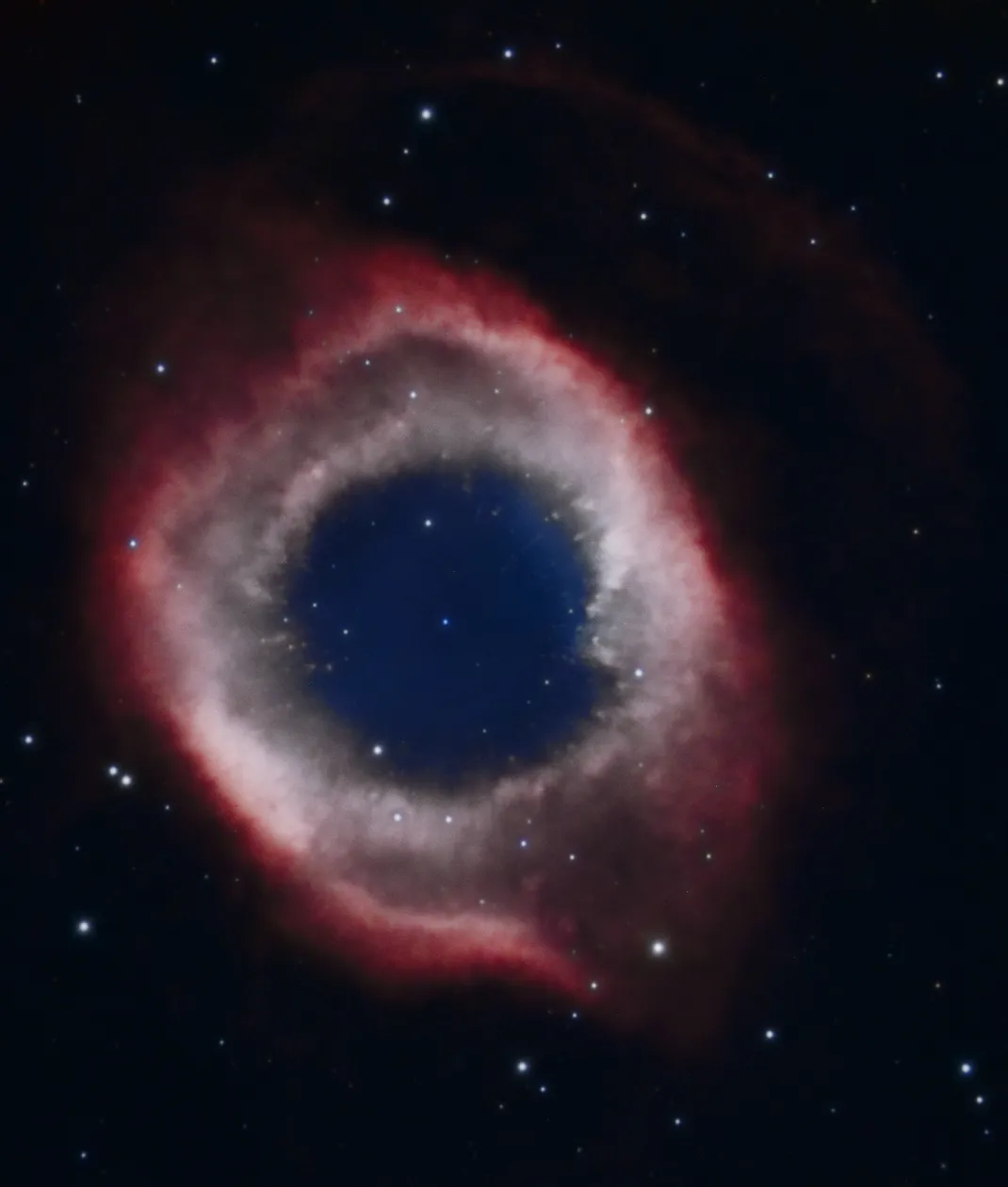The Helix Nebula, sometimes referred to as the 'Eye Of God Nebula', is an object known as a planetary nebula located 650 lightyears away and seen in the constellation Aquarius.
Catalogued as NGC 7293, this amazing object is one of the most striking nebulae that can be seen, and has unsurprisingly been captured by amateur astrophotographers and professional observatories alike.

What is a planetary nebula?
A planetary nebula doesn't have anything to do with planets. Rather, it is a dying star that's running out of fuel, ejecting its outer layers into space and producing a large, puffed-out structure.
Often planetary nebulae have a distinctly spherical shape and look rather like planetary bodies: hence their name.
So planetary nebulae like the Helix Nebula may be a glimpse into the future, as the same thing will happen to our own Sun when it begins to run out of fuel and expands outwards.
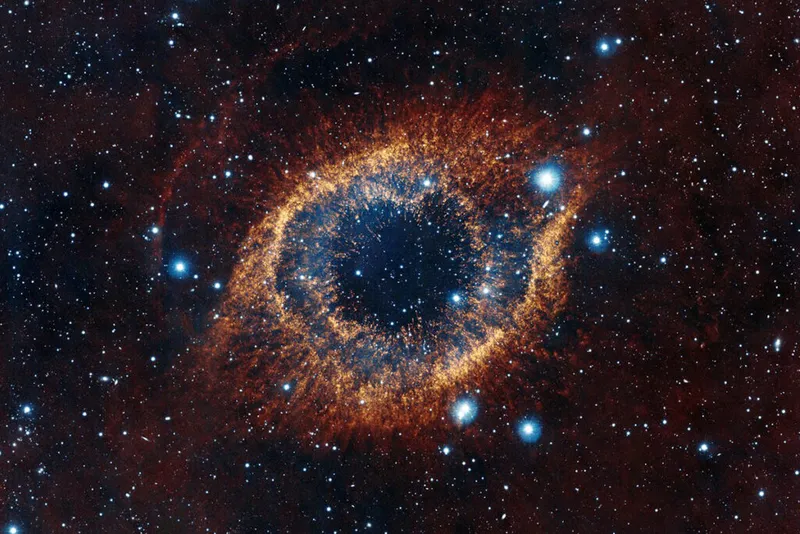
What the Helix Nebula looks like
The Helix Nebula is a thinly-spread nebula, it has to be said, as background stars can easily be seen through the cosmic cloud.
It is ethereally translucent, and also looks rather like an eye, leading to its popular nickname 'Eye Of God'.
'Bicycle spoke' features are a common trait of the Helix Nebula in images, as cosmic gas and dust is ejected outwards from the central star, which at 120,000°C is scorchingly hot.
The nebula's star is a white dwarf, which is a kind of stellar remnant that's left over once a star has run out of fuel and ejected its outer layers into space.
And as for any planets that were in orbit around the star? The expansion of the Helix Nebula means they would have been knocked out of their orbits, swallowed up or incinerated.
Such is the fate that awaits our own Solar System in about 5 billion years.
You can find out more about this in our guides What will happen to our Solar System in the future? and What will happen when our Sun dies?
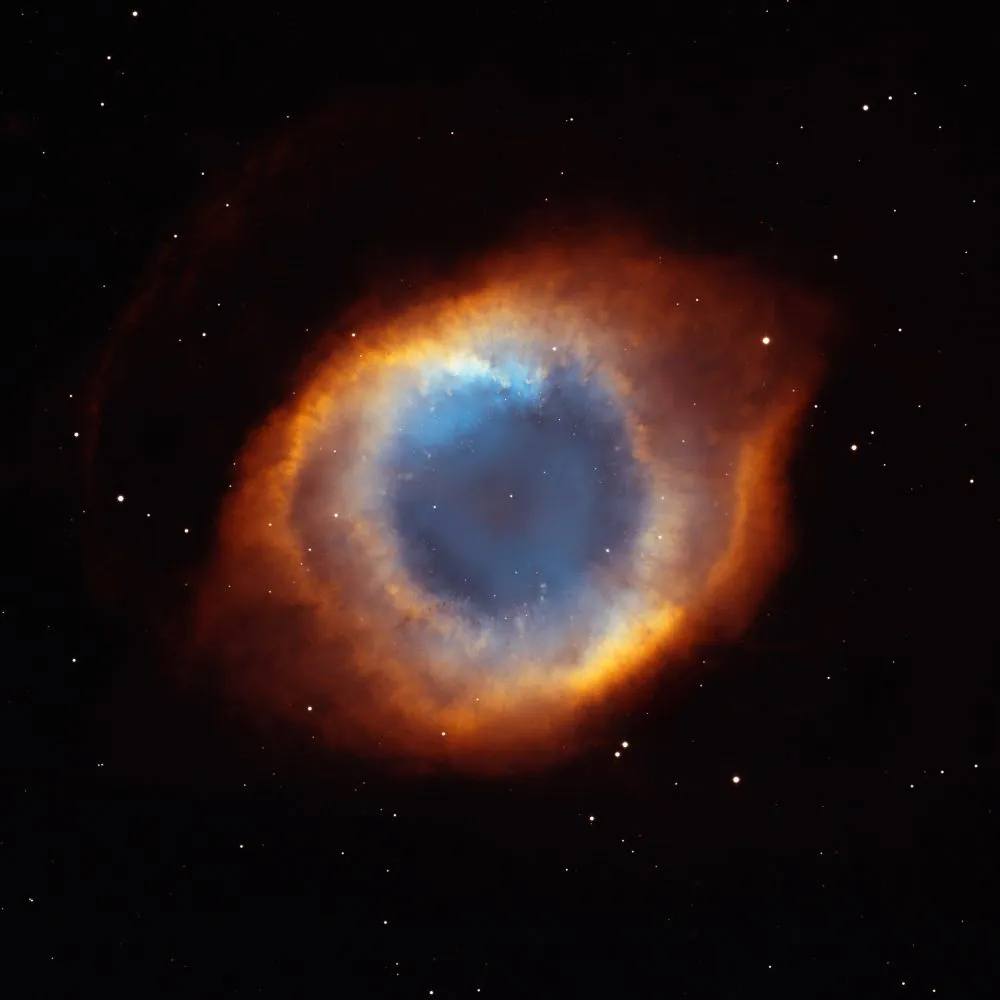
Look familiar?
Fans of the popular US comedy The Big Bang Theory may think that the Helix Nebula looks familiar.
A poster of the nebula can be seen in the background of Sheldon and Leonard's apartment throughout the series.
The poster on their wall is of the famous Hubble Space Telescope image.
How to locate the Helix Nebula
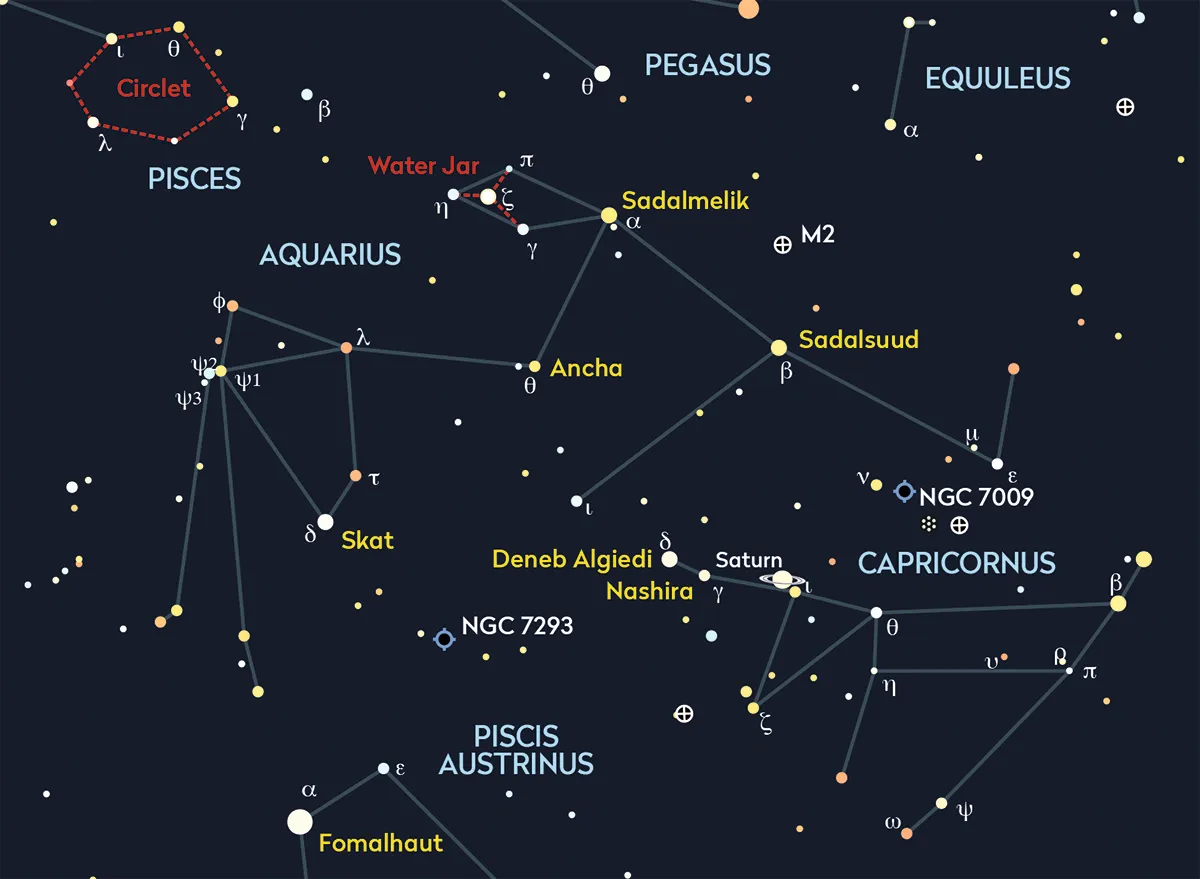
You can find the Helix Nebula just below the main star pattern of the constellation Aquarius.
Locate two of its brightest stars, Sadalmelik and Ancha, then draw an imaginary line between the two.
Extend that line beyond Ancha for just shy of twice that distance again, and you'll come to NGC 7293, the Helix Nebula.
You can use the star chart above to help you locate it.
Images
Have you captured an image of the nebula? We'd love to see it? Send us your pics by emailing contactus@skyatnightmagazine.com and they could appear in a future issue of BBC Sky at Night Magazine

